I’ve been teaching Hebrew for about four years now, and I’ve gotten a lot of questions – via email, my YouTube channel, and in-person – about what the Hebrew language is (or isn’t). I’ve noticed that many of you are wondering similar things about Hebrew and its characteristics, so I figured, why not address them in a blog?!
Here are some of the most frequently asked questions and answers about Hebrew; if you have a general question that isn’t answered here, I invite you to ask in the comments. Chances are if you’re wondering about something, other people are too, and they’ll appreciate you asking!
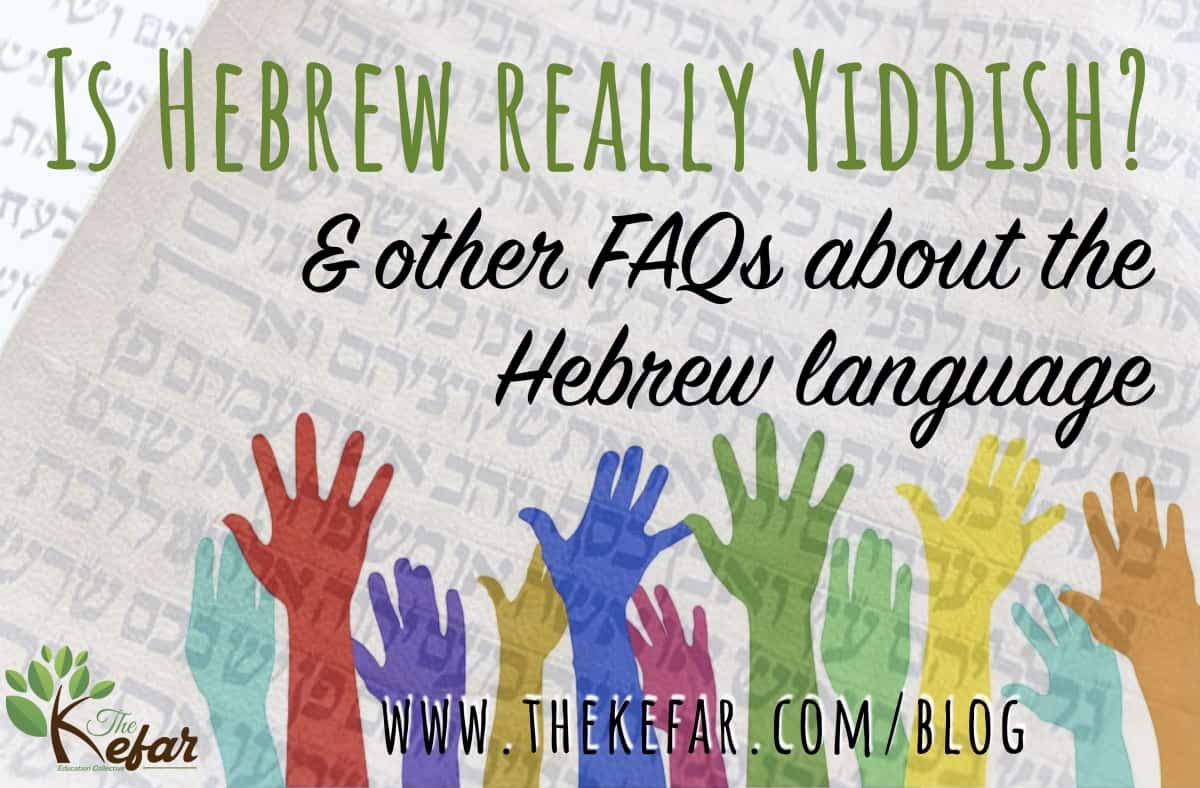
FAQ 1: IS MODERN HEBREW YIDDISH?
Answer: No. They are different languages that come from different language families; Yiddish is Indo-European (Germanic), and Hebrew is Afro-Asiatic (Semitic). Yiddish and Hebrew use the same alphabet (writing system), but that doesn’t make them the same language anymore than English and Italian are the same.
Take a look at the two sentences in the image below. They both say “I love Hebrew” – one is in Hebrew, and the other is in Yiddish. Even if you don’t read either language, you can clearly see that they’re not at all the same words – even though they’re using the same letters.
The Hebrew (right) says “Ani ohev Ivrit.” According to Google Translate (because I don’t speak a lick of Yiddish), the Yiddish sentence says “Ikh libe Hebreish.” If you look at any Hebrew and Yiddish sentences side by side, it’ll be obvious to you that they are not the same language, any more than English and Italian are the same.
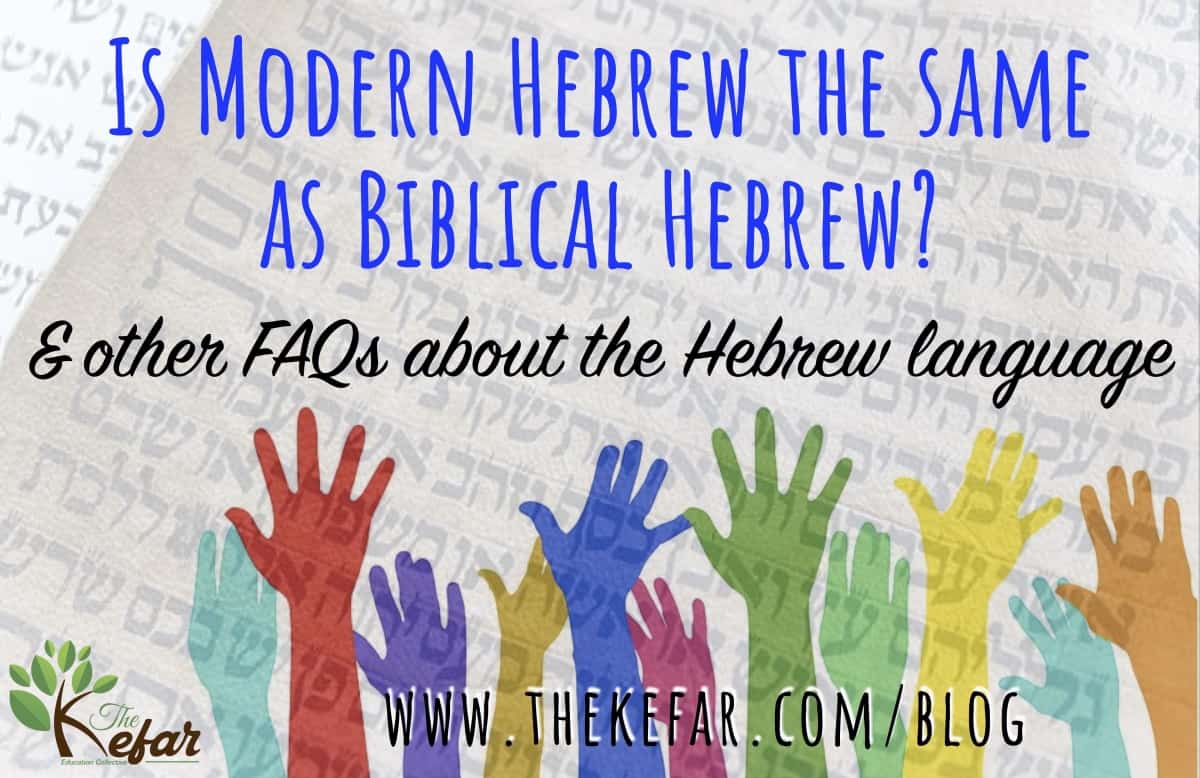
FAQ 2: IS MODERN HEBREW THE SAME AS BIBLICAL HEBREW?
Answer: Not quite. Biblical Hebrew forms the basis of Modern Hebrew, which of course has lots and lots of new words, most of them created out of sheer necessity (there were no Biblical Hebrew words for ice cream, computers, and dryers, for instance). In many cases, new Hebrew words are created using existing Biblical Hebrew or Semitic roots. The word for ice cream, “g’lidah” (גלידה) comes from an Aramaic root meaning “frost;” the word for computer, “machsheiv,” (מחשב), comes from a Biblical Hebrew root meaning “to think/process;” and “meyabeish,” (מייבש), which is dryer in Hebrew, comes from a Biblical Hebrew verb meaning “to dry.” These are just a few examples of how Modern Hebrew and Biblical Hebrew maintain a close relationship.
There are certainly differences, though, such as in syntax (sentence structure), grammar, word connotations, and even in letter sounds. In Biblical Hebrew, for instance, certain letters like gimel (ג) and tsadi (צ) had multiple sounds, creating multiple roots that are spelled the same, but have different meanings. In Modern Hebrew as spoken by most Hebrew speakers today, those letters only have one sound. (Hebrew speakers from Yemen, Iran, Iraq, and some North African countries maintain some of the original sounds.)
You should also know that the Hebrew language, like all languages, has always undergone changes. The story of Yiftach (יפתח, Jephthah in English) in Judges 12 shows us that there were pronunciation differences during the time of the judges. There are also grammatical changes within Biblical Hebrew itself, particularly from the First Temple Period and the Second Temple Period. This is natural – languages are constantly evolving over time. Think back to high school, when you had to read Shakespeare or Chaucer and perhaps struggled through it. Those books were written in English, but we neither speak nor write that way today; in 2000 years, our great-great-great-great-great-great (you get the picture) grandchildren won’t speak or write the way we do today either.

FAQ 3: DOES HEBREW HAVE VOWELS?
Answer: Yes. YES. YESSSSSSS. Unfortunately, this is a misconception held by [what seems to be] a growing number of people, and it’s totally false. I think it’s also worth noting that most folks I see teaching that Hebrew doesn’t have vowels are also the same folks teaching that Modern Hebrew is Yiddish….I’ll let you come to your own conclusions about that.
Hebrew has always had multiple vowel sounds, which speakers/readers applied based on their knowledge of the language. There are plenty of words in Hebrew that are spelled the same way, but pronounced differently for different meanings. For instance, based on context and understanding, a native Hebrew speaker would know whether to pronounce אדם as “adam,” meaning mankind, “adom,” meaning red, or “odem,” meaning ruby.
Hebrew literacy began to decline after the exile, as Israelites began to speak the languages of the lands in which they lived. Scribes in the latter half of the first millennium (600 AD and beyond) created a system of markings to represent Hebrew’s vowel sounds, so those with less understanding of the language would be able to learn and speak it. They did not create vowels – they created symbols to represent the vowel sounds that were already in use.
This means that Hebrew speakers (or learners) no longer had to rely on context or understanding they may not have had yet, to know how to pronounce words. Using the example of אדם from above, even beginners can use vowel markings to know that אָדָם is “adam,” אָדֹם is “adom,” and אֹדֶם is “odem.”
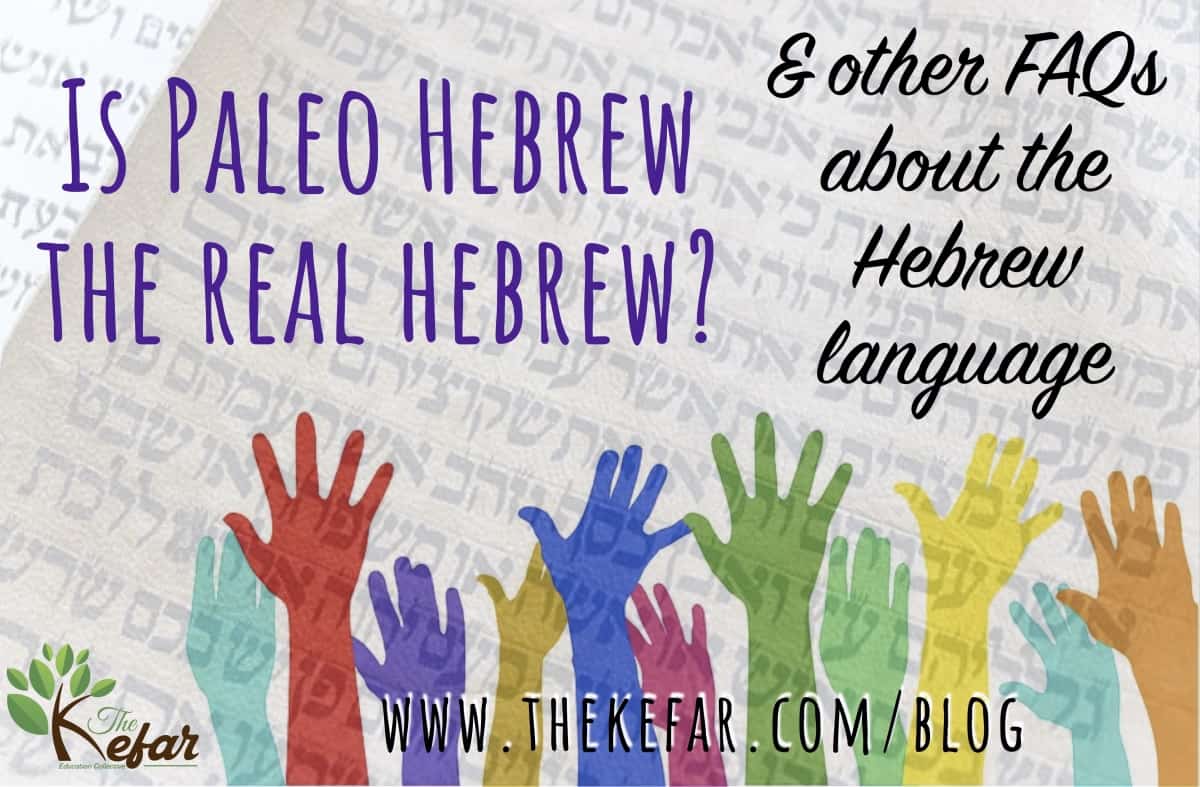
FAQ 4: IS PALEO HEBREW THE REAL HEBREW?
Answer: No…? I guess it would depend on how you define “real” or “original” Hebrew. First, it’s important to note that Paleo Hebrew refers to a writing system, not a spoken language. It would be like writing in cursive vs. print – it refers to a method of writing a given language, rather than the language itself. Second, what we call Paleo Hebrew writing is essentially Phoenician; the Paleo symbols were adapted almost entirely from the Phoenician alphabet.
Folks looking for a “pure” form of Hebrew will be hard-pressed to find it. Hebrew itself is a derivative of a Canaanite language, and adapted its writing system first from the Phoenicians (and the Phoenicians adapted it from the Canaanites), and then from the Arameans. The Hebrew letters you’re probably most familiar with, and the ones used in the Tanach (Hebrew Bible) are Aramaic in origin.

FAQ 5: DO YOU TEACH SEMITIC / PHOENICIAN / ARAMAIC HEBREW?
Answer: No, and neither does anyone else. Semitic in this context refers to a family of languages, and other Semitic languages include Aramaic, Arabic, and Amharic, an Ethiopian language. Hebrew is Semitic, so Semitic Hebrew doesn’t really make sense. Phoenician and Aramaic are their own distinct languages that are separate from Hebrew, just like English and Italian are their own languages.
There you have it folks, answers to some of the most frequently asked questions that I’ve received about Hebrew over the years. I am planning to update this as I more common questions about the Hebrew language arise. If you’re a Hebrew learner, I hope this has helped you, and if you’re a Hebrew teacher, I hope you can use this as a resource for your students. If you know anyone studying Hebrew, share this post with them!
Much love,
T’helah 💙

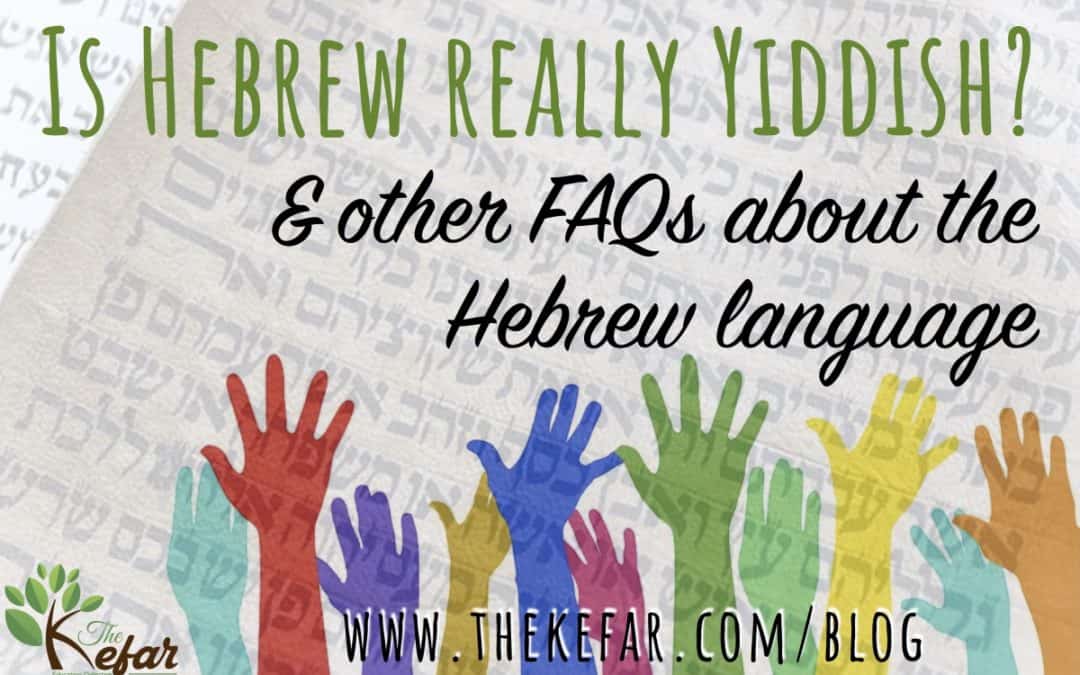
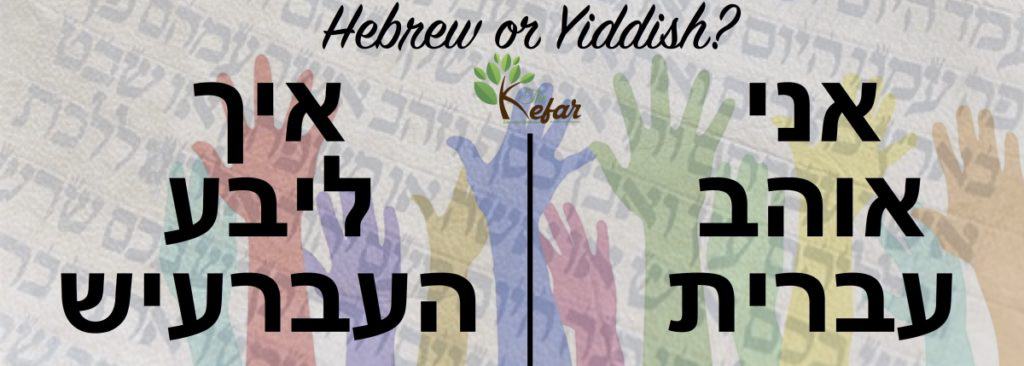
Very Impressive! Do you have any experience with Hebrew in Israel.
Thanks, Rifiella! What type of experience are you referring to? I’ve spent a couple of summers in Israel, and I’ve actually been living in Israel since Aug 2017. The Hebrew teaching certificates I have also came from an Israeli institution.
Hello,
How long did it take you to learn Hebrew? Was it challenging for you? Thank you for your time!
Hi Cateea, I grew up speaking Hebrew, so adding to that wasn’t challenging for me because I already had a solid foundation. I’m always learning, though, I don’t think that’s a process that ever ends! 🙂
Thank you!
You are the best teacher that I have ever listened to ! And, at 74 years old… this is saying a lot! To present a difficult subject with just clarity and ease in presentation is a real God given gift! I have my degree in lower elementary education and love following all of your lessons! Toda rabah
Diane LaFlamme!
Thank you so much Ms. Diane! I appreciate your support and glad that I can be a resource for you.
I agree with Ms. Diane’ comments that you are the best Morah I’ve come across in the last 2 years of studying Hebrew. The way you break down verbs into first finding the roots in pa’al Binyan and then relating different related verbs that have the same root, like the infinitive “to study” is genius!!!👍
Your lessons are so logical, and clear, concise, and to the point‼️‼️
The way other on-line Hebrew courses are they don’t give why’s that would give you a clear understanding of what’s going on with the language and the logic of how to use the language, especially the verbs with the complex congregations of each of the 7 binyanim (stems) in Hebrew.
You just make it simple, the way you teach Hebrew makes I rut come alive.
Toda raba T’ahela!